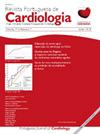Genetic aspects of congenital heart disease in heterotaxy syndrome
IF 1.6
4区 医学
Q3 CARDIAC & CARDIOVASCULAR SYSTEMS
引用次数: 0
Abstract
Abnormal arrangement of thoracoabdominal organs, situs ambiguous, is also known as heterotaxy syndrome (HTX). It has been frequently linked with congenital heart diseases (CHD), which are commonly reported as atrioventricular septal defects (AVSD), atrial septal defects (ASD), ventricle septal defects (VSD), transposition of the great artery, and pulmonary stenosis or atresia. Two HTX categories are right atrial isomerism (RAI) and left atrial isomerism (LAI), which are distinguished by the organ's sidedness as well as their complexity. The etiology of the syndrome is being studied widely, where recent studies are more focused on the effect of gene variants present in affected individuals. DNAH11, DNAH5, ZIC3, NODAL, and LEFTY are among the genes studied and associated with HTX. DNAH11 and DNAH5 are associated with ciliary function while ZIC3, NODAL and LEFTY are associated with signaling pathways. As multiple genes are involved, HTX has been reported to have an autosomal dominant, autosomal recessive or X-linked inheritance patterns, depending on the causative genes in the individual. This review aims to summarize several previously reported HTX gene variants, inheritance patterns, as well as the cardiac and extracardiac clinical manifestations.
先天性心脏病异位综合征的遗传方面。
胸腹脏器异常排列,位置不明确,也被称为异位综合征(HTX)。它经常与先天性心脏病(CHD)有关,通常报道为房室间隔缺损(AVSD)、房间隔缺损(ASD)、室间隔缺损(VSD)、大动脉转位和肺动脉狭窄或闭锁。HTX分为右心房异构体(RAI)和左心房异构体(LAI)两类,它们以器官的侧边性和复杂性来区分。该综合征的病因学正在被广泛研究,最近的研究更多地集中在受影响个体中存在的基因变异的影响上。DNAH11、DNAH5、ZIC3、NODAL和LEFTY都是与HTX相关的基因。DNAH11和DNAH5与纤毛功能有关,ZIC3、NODAL和LEFTY与信号通路有关。由于涉及多个基因,据报道HTX具有常染色体显性、常染色体隐性或x连锁遗传模式,这取决于个体的致病基因。本文旨在总结几种先前报道的HTX基因变异、遗传模式以及心脏和心脏外的临床表现。
本文章由计算机程序翻译,如有差异,请以英文原文为准。
求助全文
约1分钟内获得全文
求助全文
来源期刊

Revista Portuguesa De Cardiologia
CARDIAC & CARDIOVASCULAR SYSTEMS-
CiteScore
2.70
自引率
22.20%
发文量
205
审稿时长
54 days
期刊介绍:
The Portuguese Journal of Cardiology, the official journal of the Portuguese Society of Cardiology, was founded in 1982 with the aim of keeping Portuguese cardiologists informed through the publication of scientific articles on areas such as arrhythmology and electrophysiology, cardiovascular surgery, intensive care, coronary artery disease, cardiovascular imaging, hypertension, heart failure and cardiovascular prevention. The Journal is a monthly publication with high standards of quality in terms of scientific content and production. Since 1999 it has been published in English as well as Portuguese, which has widened its readership abroad. It is distributed to all members of the Portuguese Societies of Cardiology, Internal Medicine, Pneumology and Cardiothoracic Surgery, as well as to leading non-Portuguese cardiologists and to virtually all cardiology societies worldwide. It has been referred in Medline since 1987.
 求助内容:
求助内容: 应助结果提醒方式:
应助结果提醒方式:


